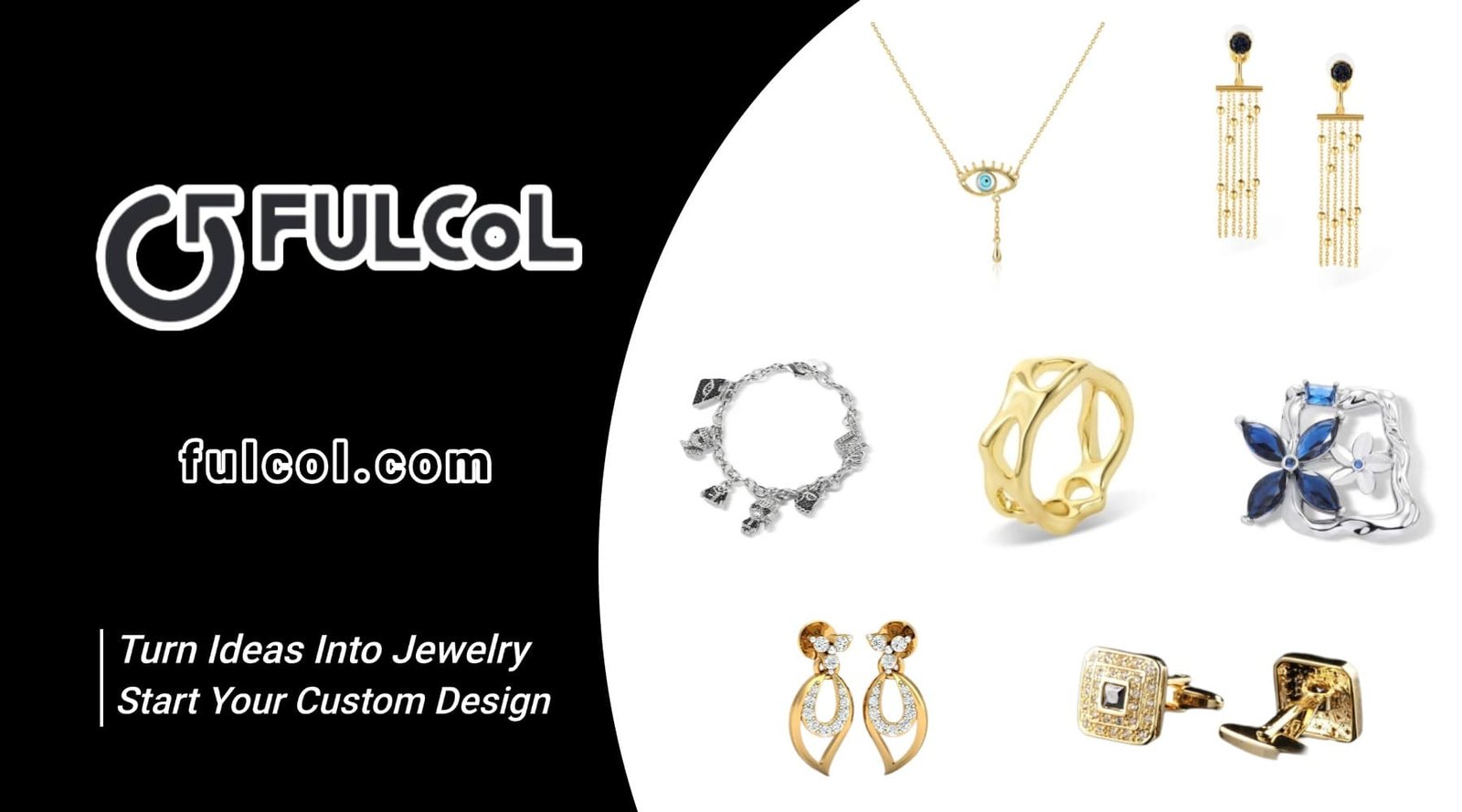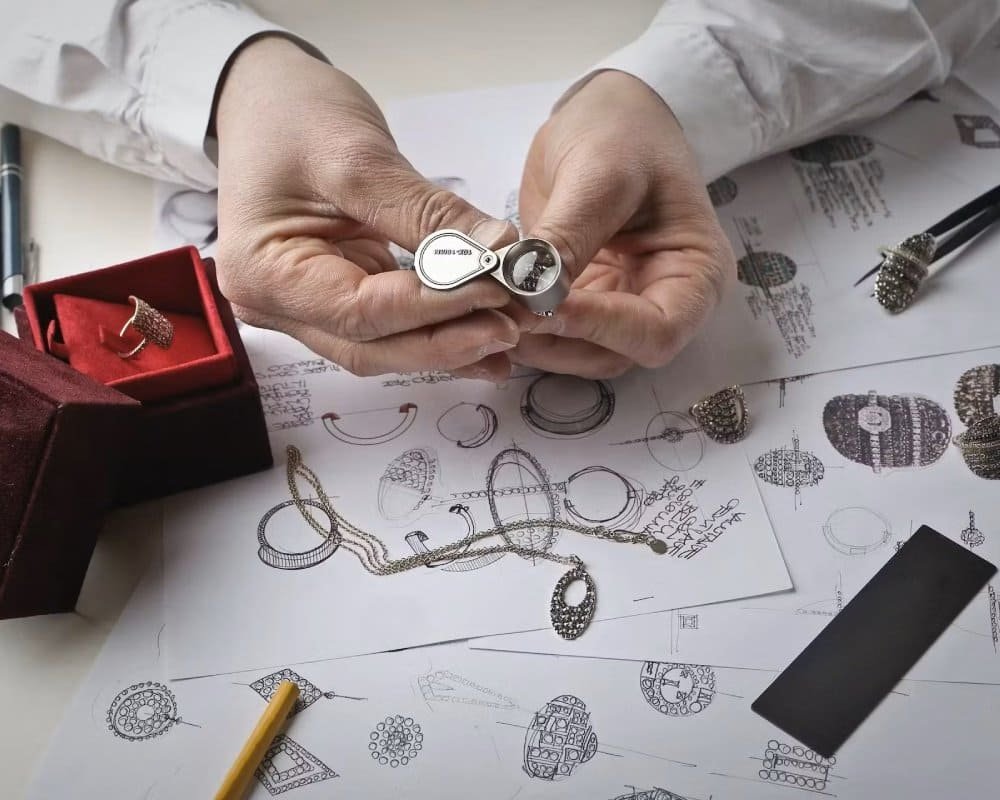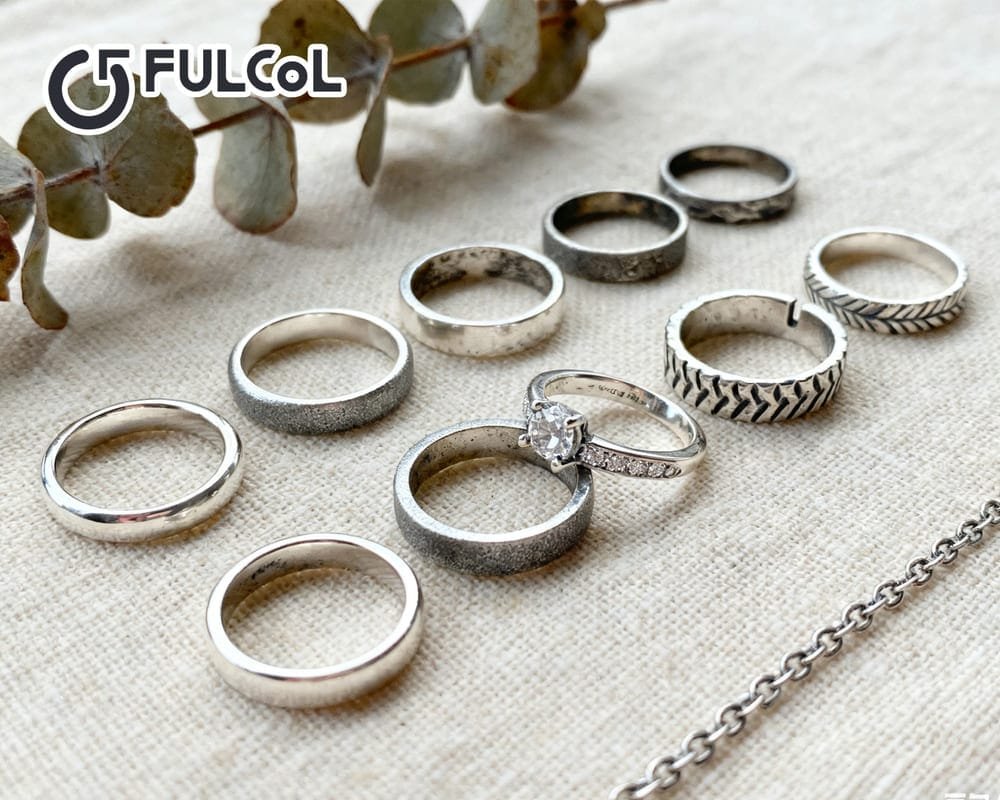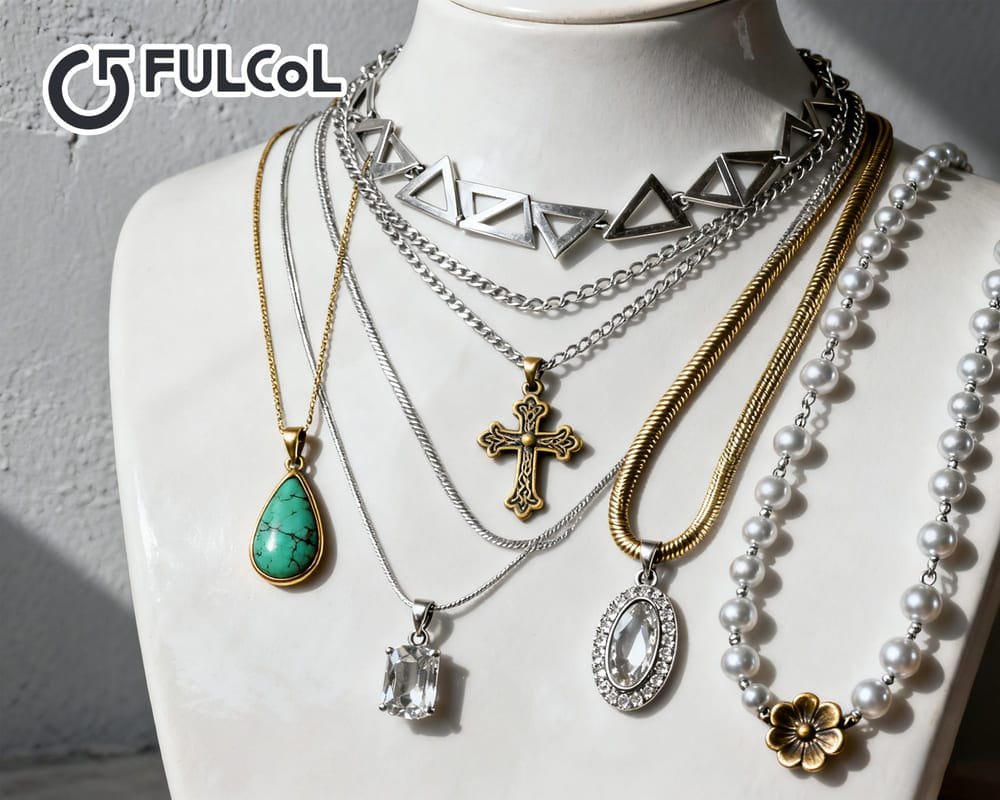Navigating the landscape of manufacturing can be a complex task because there are so many options. If you are in the jewelry industry and have a unique product idea, you are probably looking for a reliable manufacturing partner to help you turn your vision into reality.
In this era where customization and differentiation have become mainstream, brands should not only focus on product design, but also on production efficiency, quality control and intellectual property protection. OEM and ODM just meet these needs: OEM allows customers to fully control the design details, while ODM can quickly launch new products with the design strength of suppliers. How to choose the most suitable partner among many custom jewelry suppliers has become an urgent problem for every jewelry brand.
You may have encountered the terms jewelry OEM and ODM in the selection process, but what do they mean and how do they differ?
Table of contents
- What is jewelry OEM and ODM customization service
- Advantages and disadvantages of OEM jewelry
- Advantages and disadvantages of ODM jewelry
- When to choose OEM? When to choose ODM?
- How to evaluate the professional qualifications of jewelry OEM manufacturers
- Jewelry OEM and ODM cooperation process and operation steps
What is jewelry OEM and ODM customization service
OEM-full design, easy production
OEM (Original Equipment Manufacturer) is “OEM” or “contract manufacturing”: the customer is responsible for providing the complete product design, specifications and bill of materials, and the OEM manufacturer is only responsible for producing the finished product as required, without participating in design and development. This model is suitable for brands with mature design teams and pursuing high differentiation and exclusivity.
- Design independence: The brand needs to provide a complete technical package (including CAD files, process instructions, color standards, etc.) from product shape, material selection to process details. For example, for an 18K rose gold inlaid square amber pendant, you need to specify the amber size (such as 10×8mm), metal color (18K Rosé 75% gold content), polishing process (mirror or matte), etc.
- Cost structure: OEM generally does not charge mold fees, but material procurement and labor costs are calculated based on actual usage. If the annual output is ≥1,000 pieces, you can negotiate with the manufacturer to the raw material price + 8-12% processing fee; if the annual volume is only 100-300 pieces, the processing fee may rise to 15-20%.
- Applicable scenarios: If you already have a mature design team or cooperate with well-known designers, it is best to hope that the work is absolutely exclusive and not copied by the market.
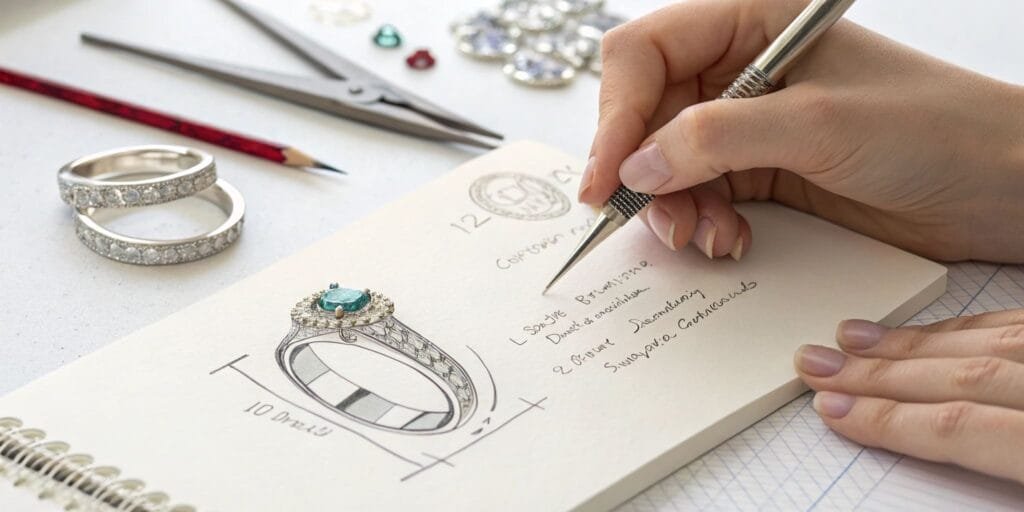
ODM – semi-customization, quick trial
ODM (Original Design Manufacturer) means “original design manufacturing”: the supplier has its own design team and product catalog, from which customers can select and make small adjustments, and the supplier is responsible for the entire process of design, development and production. This model is suitable for brands with limited resources, who want to quickly test the market, and have certain but not completely independent needs for design.
- Design support: The supplier provides a standard product catalog, such as “Vintage Hollow Diamond Series” and “Minimalist Geometric Pure Silver Series”, etc., on which the brand can select and propose color change, engraving, fine-tuning of patterns and other requirements.
- R&D investment: ODM generally needs to pay a one-time development fee (depending on the situation), including mold making and designer creative fees. The mold generally uses aluminum alloy or copper soft mold, with a lifespan of about 1,000-1,500 times.
- Applicable scenarios: Startup brands or IP joint projects that want to test the market in small batches, as low as 20-50 pieces MOQ can quickly produce samples and verify sales feedback.
| Mode | Design-led | Development cycle | MOQ | Cost structure | Applicable brand type |
| OEM | Brand | ≥4 weeks | ≥100 pieces | Materials + labor | Mature brands, limited editions |
| ODM | Manufacturer | 2–3 weeks | 10–50 pieces | Mold fee + unit price | Start-up brands, small batches |
Advantages and disadvantages of OEM jewelry
Advantages
High degree of autonomy in design and brand
Under the OEM model, the brand has 100% design dominance, and can freely define everything from style sketches, CAD files, to material ratios and process flows.
For example, when a high-end jewelry brand customizes an 18K rose gold inlaid emerald ring, it can specify specific parameters such as “emerald cut shape (such as love), metal gold content (75%), and polishing type (mirror or fine frosting)” to ensure that the finished product is completely consistent with the brand tone.
Exclusivity and differentiated competition
Since the design results are exclusive to the brand, there will not be a second company on the market with the same style, which can maximize the brand premium and scarcity. If a limited series is produced only 500 pieces per year, consumers are more likely to form a “first come, first served” buying impulse, stimulating sales conversion.
Strict quality control
Brands can set exclusive testing standards for materials (such as precious metal content), intermediates (such as inlay bases), finished products (such as gemstone firmness) and other links before entering the factory, and require manufacturers to introduce third-party quality inspection methods such as XRF analysis, gemstone testers, AQL sampling inspections, etc., to improve quality stability and traceability.
Disadvantages
High initial investment and relatively high cost
Design cost: If there is no internal design team, it is necessary to hire additional jewelry designers or cooperate with design agencies. The cost of a single design usually ranges from US$1,000 to US$3,000.
Sample and mold fees: Although common OEMs can waive mold fees, if the process is complex (such as three-dimensional hollowing), you still need to pay for hand-carving or 3D printing mold fees.
High unit price: Because the entire process is processed according to customer requirements, the labor and material waste costs are high, and the unit price is usually higher than ODM.
Long delivery cycle
From the initial design → mold making → first sample proofing → feedback iteration, the complete cycle is generally 4-6 weeks or even longer, which is not suitable for holiday promotions or rapid new product launches.
Higher minimum order quantity (MOQ)
Due to the high one-time production cost, most OEM manufacturers set an MOQ of ≥100 pieces, which is very unfriendly to start-up brands or market trial orders.

Advantages and disadvantages of ODM jewelry
Advantages
Greatly reduce initial investment
ODM manufacturers have accumulated a mature design library. Brands can directly select from ready-made series such as “retro elegance”, “minimalist geometry” and “trendy color collision”. They only need to pay the development fee, and subsequent mass production can be charged at the unit price without repeating the design cost.
Fast proofing and shortened time to market
Short sample cycle: Relying on the manufacturer’s existing molds and processes, the first version of the proofing can be completed in 2-3 weeks, and the efficiency of the second iteration can be controlled within 1 week.
Fast market response: suitable for holiday gifts, IP joint or limited-time promotions, samples can be quickly obtained and online pre-sales can be carried out before the new product is released.
Low MOQ, flexible trial
Most ODMs support a minimum order of 10-50 pieces, which is very suitable for niche brands or multiple small quantities and flexible combinations of new product trial orders.
Manufacturers share professional design resources
The design team of ODM manufacturers usually has experience in accessories in multiple fields, and can provide value-added services such as trend reports, color matching suggestions, and material matching to help brands get inspiration in style positioning and marketing.
Disadvantages
Limited brand differentiation
Since they all come from the same design library, different brands choose styles from the same ODM manufacturer, and the finished products are prone to overlapping styles. If competitors or e-commerce platforms sell the same design, the brand uniqueness and premium ability are weakened.
Limited customization space
Generally, only small-scale modifications such as “color, lettering, and accessory fine-tuning” are supported. If major changes or new designs are required, additional secondary development fees must be paid, and the complexity and cost are sometimes not lower than the OEM model.
Intellectual property risk
ODM manufacturers own the copyright of the design. If a strict NDA is not signed or the contract terms are not perfect, the design can be easily transferred to third-party customers or reused in multiple places without sufficient authorization.
Quality control needs to be cautious
Although the development cost is low, some ODM manufacturers will reduce the process accuracy or material thickness (such as only 1-2 microns of plating) to reduce costs in pursuit of scale. If QC sampling and supplier management are not done well, the durability and feel of the finished product may be poor.
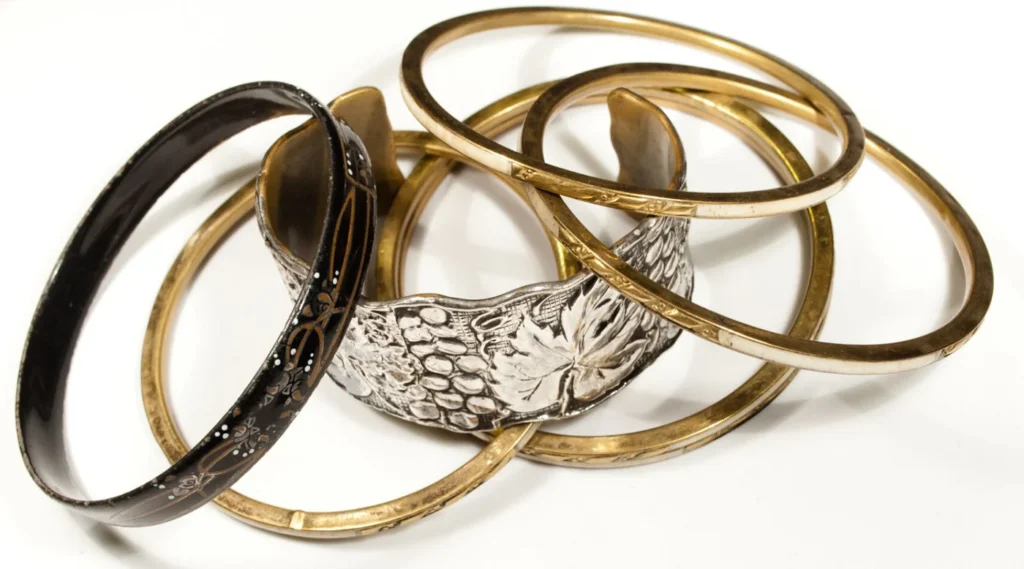
When to choose OEM? When to choose ODM?
Pursuing exclusive IP and high-end premium: OEM is the best choice. Whether it is a limited series, designer joint name, or luxury customization, “foolproof” design confidentiality and uniqueness are required.
- Limited resources and need to test the water quickly: ODM is more cost-effective. Startup brands, Internet celebrity pop-up stores or festival gifts focus on “timeliness + cost control” and do not need to build a design system from scratch.
- Hybrid strategy: You can combine the advantages of both – use OEM customization for the main styles to build a brand image; use ODM to quickly launch seasonal or trendy styles to improve market response speed.
Through comparison, you can choose the best one based on your own brand positioning, budget size, team capabilities and other factors, so that you will not be dragged down by high initial investment, and you can also maintain a differentiated advantage in the fiercely competitive market. I hope this analysis will help you choose the right partner on the road of jewelry customization and move forward steadily.
| Mode | Advantages | Disadvantages | Typical applicable scenarios |
| OEM | – Completely independent control of design – Higher brand premium and differentiation – No development costs, only per piece pricing | – Long sample development period – High MOQ – Need to invest in design costs in the early stage | New series of well-known brands, limited edition customization |
| ODM | – Design team assistance saves time and effort – Short development cycle – Low MOQ suitable for small batch trial orders | – Limited to the supplier’s design style, limited innovation – High subsequent modification costs – Products may be purchased by other customers at the same time | Startup brand trial models, holiday joint gifts |
How to evaluate the professional qualifications of jewelry OEM manufacturers
International Quality Management System Certification (ISO 9001:2015)
ISO 9001:2015 is not only the most widely adopted quality management standard in the world, but also includes modules such as risk management and continuous improvement, which can effectively ensure the stability and traceability of the production process. According to Mercery, ISO 9001 helps to improve customer satisfaction, optimize resource utilization, control marginal costs and promote continuous improvement.
Certification by authoritative industry organizations
Responsible Jewelry Council (RJC): The authoritative ethical and sustainable standards for the global jewelry industry, covering raw material procurement, labor rights and environmental protection practices. RJC certification indicates that manufacturers have strict control capabilities in ethical procurement and environmental protection.
Gems & Jewellery Export Promotion Council (GJEPC): India’s Gem and Jewellery Export Promotion Council, whose member companies often participate in international exhibitions and have mature export experience.
Production capacity and equipment
Modern digital tools: CAD design, 3D printing, CNC milling machines, etc., can accelerate sample production and complex structure processing.
Employee qualifications: Check the certification of technicians or jewelry craftsmen, such as GIA gemologists, gold and silver jewelry processing technicians.
Sustainability and compliance
Environmentally friendly materials and processes: Comply with the Bensam Convention and REACH regulations to ensure that precious metals, plating and gemstones do not have illegal chemical residues.
Social responsibility report: Manufacturers can provide annual sustainable development reports to prove their continued investment in environmental protection and social responsibility.
Jewelry OEM and ODM cooperation process and operation steps
Demand submission
Customers submit preliminary requirements online or by email, including brand background, positioning, budget, expected delivery date, etc.
In-depth communication
The customer success manager discusses the design ideas, material selection, functional requirements, IP protection and other details with the design/technical team in detail.
Draft design and quotation
ODM: The design team submits 2-3 creative sketches.
OEM: Calculate the cost of materials, processes and molds based on the CAD/DWG files provided by the customer.
After the customer confirms the plan, get a formal quotation.
Sample production and confirmation
Make 2D/3D model renderings.
Material procurement and complete proofing.
Customer review samples and feedback, usually 3-7 days to complete an iteration.
Mass production
Start production based on confirmed samples and technical documents.
Simultaneously conduct process inspection and semi-finished product sampling.
Quality control
Refer to AQL standards for finished product sampling, key indicators include size deviation, coating thickness, gemstone setting firmness, etc.
Packaging and logistics
Customize packaging, lining and tags, choose the right mode of transportation (air, sea or land) and arrange insurance.
| Start Your Custom Order | Email: info@fulcol.com | Number: +86 13055603907 |
In today’s jewelry market where personalization and differentiation are increasingly prominent, choosing the right wholesale custom jewelry manufacturer is not only a key step in brand building, but also a core link to ensure product quality and commercial benefits. Through an in-depth comparison of the two models of OEM and ODM, we can find that:
The OEM model has the greatest advantage of highly independent design rights and brand exclusivity, which is suitable for mid-to-high-end brands that already have a mature design system and pursue limited editions or joint series. Although the initial investment is high and the minimum order quantity is large, it can maximize the protection of intellectual property rights, ensure unique styles and controllable quality.
The ODM model wins with mature design libraries, fast proofing and low MOQ. For start-up brands, holiday gifts or IP joint projects, ODM can help you quickly test market reactions and obtain valuable sales and user feedback at a low cost and in a very short cycle.
As an ODM jewelry manufacturers with more than 20 years of experience in K gold, silver and brass jewelry ODM, Fulcol has always been committed to providing professional, flexible and efficient wholesale custom jewelry manufacturing services to every partner with the purpose of “design-oriented, quality-oriented and service-oriented”. We look forward to working with you to open a new chapter in the custom jewelry market!
